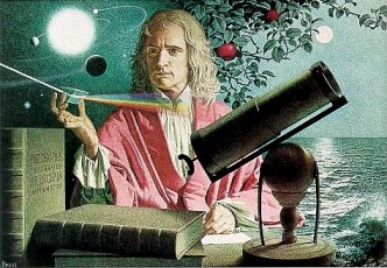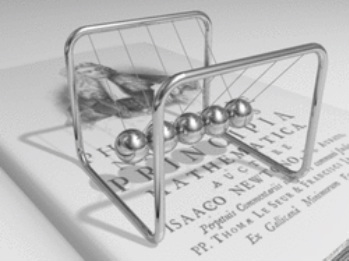Introduction

http://teachertech.rice.edu/Participants/louviere/Newton/newton5.jpg
Sir Isaac Newton is perhaps one of the most
acclaimed and well-known scientists that has ever lived in human history. His
discoveries and experiments in physics, mathematics, and a host of other
sciences have opened the door to modern science. Many of his ideas are a result
of observation and others - of pure genius. Laws that he discovered bear his
name, and it is almost certain that his name will be remembered for generations
to come. This is already proving to be true as the name "Newton" is a
symbol for principles of science and used to name ideas and inventions that
utilize important laws of nature. One such invention, known as "Newton's
Cradle" or "Newton's Balls," represents many of Newton's ground
break ideas about the laws that govern the universe. Though simple, it sums up ideas that the great scientist discovered and made known to mankind. . .

http://en.wikipedia.org/wiki/File:Newtons_cradle_animation_book_2.gif
Newton's cradle is a very simple looking
device; and when it comes to construction, its design and assembly are fairly trivial. But taking a closer look, one can see that this device portrays
laws of physics that are indeed not so meaningless. This device clearly operates under Newton's three laws and extends to cover laws of energy and
momentum. An in depth analysis of this device could easily cover dozens of mathematical and physics principles; it would take many books to contain the information. However, this analysis will consist
primarily of the principles of conservation of momentum
and energy and how they relate to Newton's Cradle. The
importance of momentum and energy in regards to this contraption is simple: without them, Newton's Balls would not operate and would probably never have been invented. Furthermore, without laws of momentum and energy, our universe
would be extremely and unpredictably different.